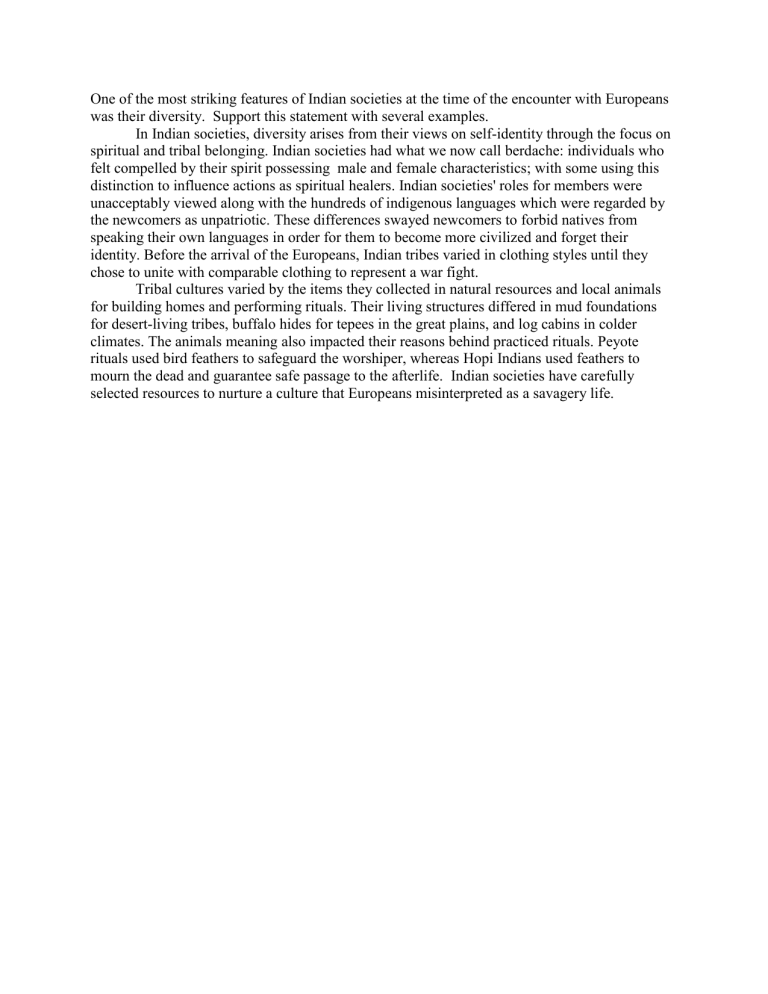
One of the most striking features of Indian societies at the time of the encounter with Europeans was their diversity. Support this statement with several examples. In Indian societies, diversity arises from their views on self-identity through the focus on spiritual and tribal belonging. Indian societies had what we now call berdache: individuals who felt compelled by their spirit possessing male and female characteristics; with some using this distinction to influence actions as spiritual healers. Indian societies' roles for members were unacceptably viewed along with the hundreds of indigenous languages which were regarded by the newcomers as unpatriotic. These differences swayed newcomers to forbid natives from speaking their own languages in order for them to become more civilized and forget their identity. Before the arrival of the Europeans, Indian tribes varied in clothing styles until they chose to unite with comparable clothing to represent a war fight. Tribal cultures varied by the items they collected in natural resources and local animals for building homes and performing rituals. Their living structures differed in mud foundations for desert-living tribes, buffalo hides for tepees in the great plains, and log cabins in colder climates. The animals meaning also impacted their reasons behind practiced rituals. Peyote rituals used bird feathers to safeguard the worshiper, whereas Hopi Indians used feathers to mourn the dead and guarantee safe passage to the afterlife. Indian societies have carefully selected resources to nurture a culture that Europeans misinterpreted as a savagery life.



